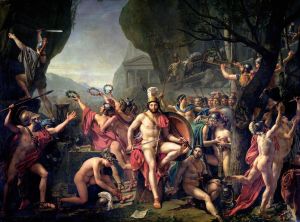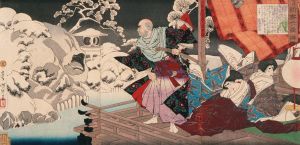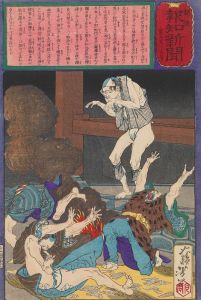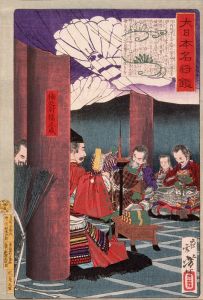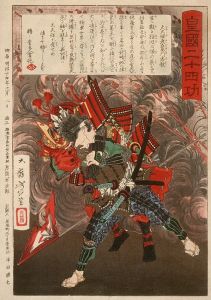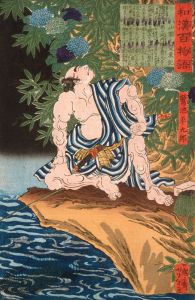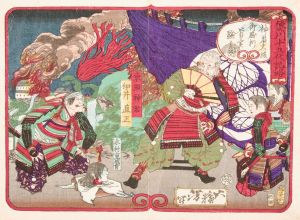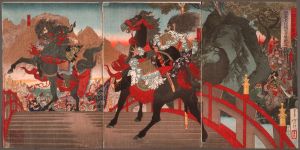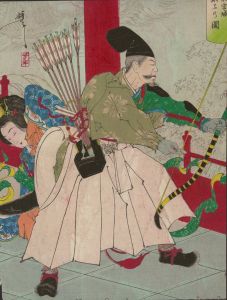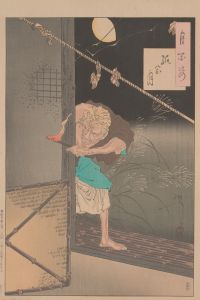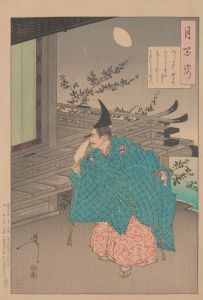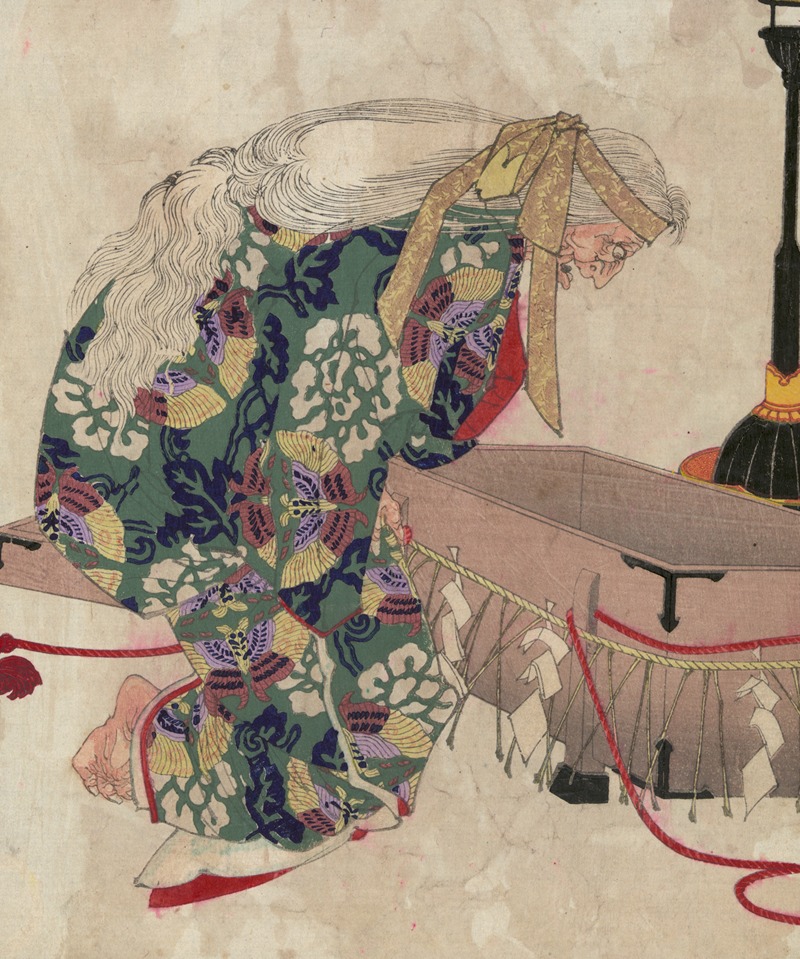
Watanabe no tsuna to ibaraki
A hand-painted replica of Tsukioka Yoshitoshi’s masterpiece Watanabe no tsuna to ibaraki, meticulously crafted by professional artists to capture the true essence of the original. Each piece is created with museum-quality canvas and rare mineral pigments, carefully painted by experienced artists with delicate brushstrokes and rich, layered colors to perfectly recreate the texture of the original artwork. Unlike machine-printed reproductions, this hand-painted version brings the painting to life, infused with the artist’s emotions and skill in every stroke. Whether for personal collection or home decoration, it instantly elevates the artistic atmosphere of any space.
"Watanabe no Tsuna to Ibaraki" is a woodblock print by the renowned Japanese artist Tsukioka Yoshitoshi, who is celebrated for his innovative and dynamic approach to the traditional ukiyo-e art form. This particular work is part of Yoshitoshi's series "One Hundred Aspects of the Moon" (Tsuki hyakushi), which was published between 1885 and 1892. The series is notable for its exploration of various themes related to the moon, drawing from Japanese history, folklore, and literature.
The print depicts a famous scene from Japanese folklore involving the legendary samurai Watanabe no Tsuna and the demon Ibaraki-dōji. According to the tale, Watanabe no Tsuna was one of the Four Guardian Kings, the trusted retainers of the heroic figure Minamoto no Yorimitsu (also known as Raikō). The story is set during the Heian period, a time characterized by the flourishing of court culture and the arts in Japan.
The legend recounts an encounter on the Rashomon Gate in Kyoto, where Watanabe no Tsuna was tasked with confronting a demon that had been terrorizing the area. As the story goes, Tsuna was ambushed by the demon Ibaraki-dōji, who attempted to drag him to the demon world. In a fierce struggle, Tsuna managed to sever the demon's arm with his sword, forcing Ibaraki-dōji to flee. Tsuna then took the severed arm back to his residence as proof of his victory.
Yoshitoshi's depiction captures the dramatic moment of this legendary battle. The print is characterized by its dynamic composition and the use of vivid colors, which are hallmarks of Yoshitoshi's style. The artist's ability to convey movement and emotion is evident in the tense posture of Tsuna and the menacing presence of the demon. The moon, a recurring motif in the series, adds a layer of mystique and enhances the supernatural atmosphere of the scene.
Yoshitoshi's "One Hundred Aspects of the Moon" series, including "Watanabe no Tsuna to Ibaraki," is considered a significant contribution to the ukiyo-e genre, particularly during a time when it was facing decline due to the advent of modern printing techniques and the influence of Western art. Yoshitoshi's work is credited with revitalizing interest in traditional Japanese themes and techniques, and his prints remain highly regarded for their artistic and cultural value.
The print not only showcases Yoshitoshi's mastery of the woodblock medium but also reflects the enduring appeal of Japanese folklore and the timeless themes of bravery and the supernatural. Through his work, Yoshitoshi has preserved an important piece of Japanese cultural heritage, allowing contemporary audiences to engage with the rich tapestry of Japan's past.





